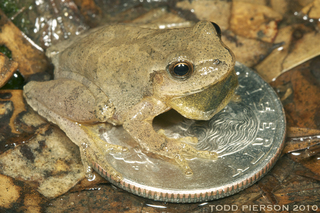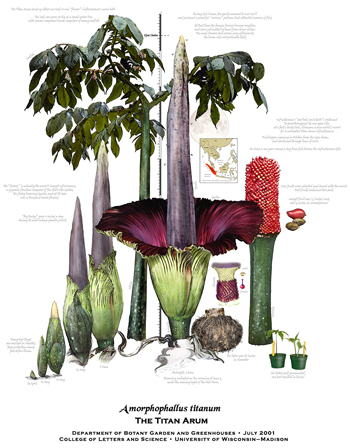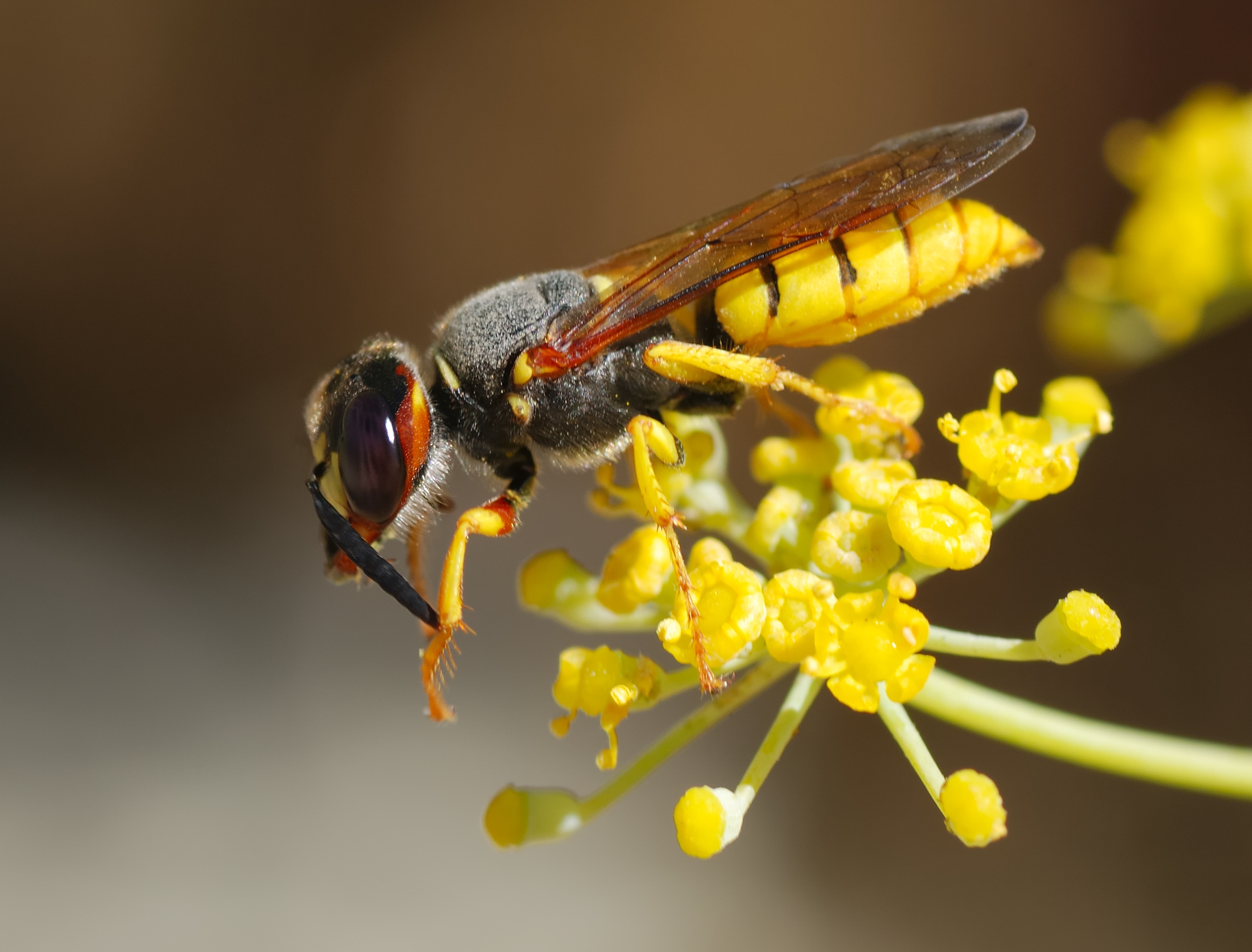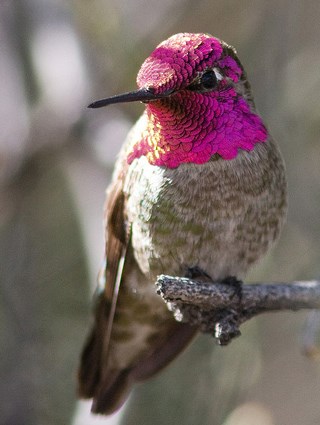Amphibious Brain Freeze
What does a tiny frog called the “Spring Peeper” have in
common the 7-11 Slurpee marketed as “The Brain Freeze?” They both come frozen. Pseudacris
crucifer is known by gardeners from
the mid-Atlantic northward to be the auditory harbinger of spring – time to get
planting! This nickel-sized amphibian is one of the first hibernating animals to
wake up after a cold winter, and the males wake up singing for you-know-what. The
amazing thing about the northern spring peeper is that it can wake up from a
frozen state. P. crucifer is one of a few species in the animal kingdom
capable of surviving several weeks as a frog popsicle. Its southern cousin, Pseudacris
crucifer bartramiana, may share this amazing ability with the northern spring
peeper, but Florida winters evidently haven’t put it to the test.
 North of “The Land
of the Flowers” frogs generally hibernate in areas protected from all but the
harshest freezes: lake bottoms or deep under the ground. By contrast, northern
spring peepers spend the winter on the forest floor camouflaged underneath moist
leaf litter. When temperatures hover around freezing, stage one of the peeper’s
hypothermic response kicks into gear. Reacting to near-freezing temperatures,
the frog’s liver changes stored glycol into glucose, a form of sugar. By
introducing glucose into the organs and circulatory system, the freezing point
of the frog’s bodily fluids is lowered by several degrees. Remember our Brain
Freeze Slurpee? The sugar in the beverage allows the drink to be super-cooled
while not freezing solid (it helps that the liquid is constantly moving like
cement in a mixer). When we drink this hyperchilled beverage, some of us
experience the pain of a too-sudden exposure to its freezing temperatures, the
famous Slurpee Brain Freeze. Prolonged exposure to freezing temperatures can
harm and even kill humans.
North of “The Land
of the Flowers” frogs generally hibernate in areas protected from all but the
harshest freezes: lake bottoms or deep under the ground. By contrast, northern
spring peepers spend the winter on the forest floor camouflaged underneath moist
leaf litter. When temperatures hover around freezing, stage one of the peeper’s
hypothermic response kicks into gear. Reacting to near-freezing temperatures,
the frog’s liver changes stored glycol into glucose, a form of sugar. By
introducing glucose into the organs and circulatory system, the freezing point
of the frog’s bodily fluids is lowered by several degrees. Remember our Brain
Freeze Slurpee? The sugar in the beverage allows the drink to be super-cooled
while not freezing solid (it helps that the liquid is constantly moving like
cement in a mixer). When we drink this hyperchilled beverage, some of us
experience the pain of a too-sudden exposure to its freezing temperatures, the
famous Slurpee Brain Freeze. Prolonged exposure to freezing temperatures can
harm and even kill humans.
But not so given
the peeper’s hypothermic survival response: stage one prevents ice crystals
from forming in the frog’s essential organs by pumping them full of glucose. That
protects the frog down to about 27 degrees F. What happens then temperatures
continue to fall? The second stage of the peeper response is to allow its body
to freeze – but to do so in a controlled manner, doing the least potential
damage to vital organs. As temperatures drop, the frog’s body adopts a triage
strategy to its freezing process. It draws water out of the most vital organs
and supercools the remaining fluids by absorbing solutes into the cell
structures. Both measures minimize the formation of ice crystals that could
rupture cells and organs. Less vital structures are allowed to freeze solid. After
the frog has effectively been frozen, the heart stops. Any necessary energy
consumption is performed anaerobically.
This controlled
freeze-out is amazing, even weird. But even more remarkable is the thaw. The
peeper must survive, indeed, return to life as a result of the process. So its
meltdown can’t simply return the ice crystals in its body to a liquid state. The
whole process must unwind itself precisely, starting by activating the vital
organs simultaneously and ending with the glucose being converted back to
glycol and returned to the liver. There are limits to this hypothermic response
and reversal mechanism. External temperature drops must not be too dramatic;
the frog needs time to engage the hypothermic response. Conversely, the heat up
time cannot occur too quickly for the frog to reverse the chemistry it set into
motion. A frog cannot remain in cryogenic suspension too long; the adaptation
has a shelf life. And at super cold subzero temperatures, the response is
ineffective – too many ice crystals will form and damage essential organs. Therefore,
peepers cannot inhabit arctic or subarctic areas. The peeper’s freezing
response is energy consumptive; harsh or prolonged winters even in temperate
climes can be its demise. A frog can only mount so many hypothermic responses
in one season before energy reserves give out. Hopefully, the spring thaw
arrives before that happens.
Early spring
imposes new demands on spring peepers. At least for males itching to mate, the
demand is to peep. Females are listening for the loudest peeper that can also peep
the most quickly. She can assess his fitness by these two qualities alone. The
loudest peeps come from the biggest vocal sacs that only the heftiest
individuals can sport. And a superfast peeper has to have remarkable breath
control – fit enough to keep peeping long and fast without pausing to provide
himself with oxygen. Once she has made her choice, the peepers dip into the
lake for an intimate moment. Then they go their separate ways. She, to lay her
eggs on a stem or twig underneath the water. He, to begin peeping another fair
maiden.
Even though our southern
spring peeper is not called upon to perform cryogenic feats, the male must
still outdo his competitors in the chorus line. Whether north or south, the
mechanics are the same. The frog fills its lungs with air, seals its nose and
mouth and passes that air back and forth from the lungs over the larynx (that
produces the sound) and into the vocal membrane. This membrane vibrates and
acts like an amplifier. And size counts. The larger the frog, the larger the
membrane. The larger the membrane, the louder the sound. Louder is better. In
the spring the peeps of these frogs can be so loud, one wonders if an alien
ship has landed near some body of water. Unlike the nocturnal northern peeper,
all a southern fella needs to start peeping, day or night, is a good soaking
rain. A healthy Florida rain can evoke a long and strong peeping behavior in P.c.
bartramiana that predictably arouses the female.
When the last peep is
peeped and the last egg deposited, northern peepers retire to woodland locales
to lounge on lower branches, eat small insects, and await the coming winter. The
randier southern peepers are better climbers. This subspecies spends its time
in higher limbs catching flies, spiders, and other small insects, and
vocalizing when the situation arises. Both peepers used to be classified as
tree frogs, Hyla, until biologists posited them into the Pseudacris
(false cricket) family of chorus frogs. Fertilized peeper eggs hatch into
tadpoles in just under two weeks. After a few weeks of grazing in their aquatic
environment, both northern and southern peeper tadpoles mature into adults,
acquiring the brown “x” (crucifer) on their backs. The northerners join
the other grown-ups in wooded areas, stocking up on proteins for the coming
winter. In three years’ time, northern and southern males will be tuning up
their vocal sacs in the hopes of gaining a lady’s favor.
Every July 11th, participating
7-11 stores offer free Slurpee (Brain Freeze) drinks to their customers. Maybe
you’ll want to quaff one down to celebrate the northern spring peeper, the
plucky amphibian with the big winter survival adaptation. Just don’t ask the
store clerk for one in frog-flavor.
Last Saturday’s
Pollinator Celebration was fun and informative. Mark your calendar for next
year! In the meantime, if you want to continue your celebration of native
pollinators, why not sign up as a monthly butterfly monitoring volunteer? And
please do feed the pollinators! See the Unsung Heroes of Pollination article for tips on how to
start a pollinator-friendly garden.










